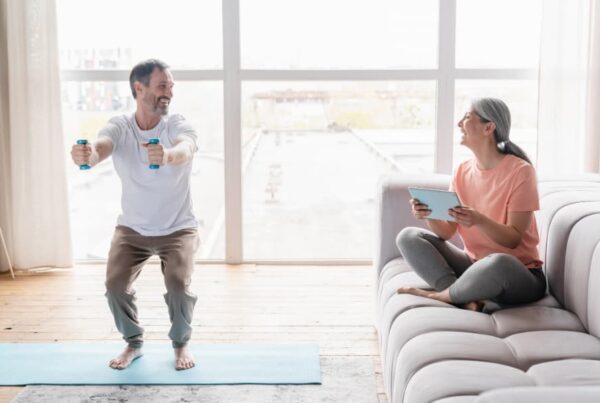Written by: Eric Foucault (REAL Personal Trainer)
The closure of many gyms and facilities has caused us to re-evaluate the way we train. That means training with no equipment and only your body weight as a form of resistance. However, I am here to let you know that this can be enough for the time being and has its benefits.
Master the Form and Technique
The first benefit of using bodyweight exercises is that they can be an easier low-load version of exercises typically done with resistance. From here on out, we’ll use one of my favourite exercises as an example, the squat. Although the technique isn’t 100% the same when doing a bodyweight squat vs the barbell squat because of the weight distribution, the form is similar enough to learn the latter from the former.
We are taught that repetition is key to learning a skill, and this is no exception. By repeating a movement like a bodyweight squat, you’re learning how to move to perform the exercise and as such, it becomes easier with time and practice. This is important because knowing how to properly perform a bodyweight squat can reduce the risk of injury when transitioning to a loaded barbell. As Dr. Aaron Horschig from Squat University says “If you can’t perform a good looking bodyweight air squat, you shouldn’t be trying to snatch or clean yet. Fundamentals must come first”. This should go with the barbell squat as well as any other compound/complex exercise.
Muscle Failure and Maintenance
So to become better at a movement, it is important to perform a lot of repetitions. This is important if you want to maintain your progress during this time of social isolation. We know that medium to high intensity is the best way to increase muscle hypertrophy, however, low-intensity exercise brought near or to failure can be enough to maintain muscle mass for many weeks to a couple of months. If you don’t want to lose your progress while the gyms are closed, this might be the best way to do so.
Change Things Up
With all this being said, it can sometimes become boring and redundant to perform the same exercises over and over again for high repetitions. Changing things up can be beneficial to keep your motivation high during these trying times. Once again, let’s use the bodyweight squat. You can change up the speed you perform the exercise to work on the eccentric portion of the movement (the downwards portion), pause at the bottom for a few seconds, or even slow the full movement to increase time under tension (total time the muscle is being worked). Regardless of how you choose to exercise, focus on quality over quantity, stay consistent with each repetition, and get as close to muscle failure as you can.







In an attempt to develop the proper technique, as well as maintain the mobility required, I have incorporated your advice of performing 100 bodyweight squats with full range of motion with minimal rest as a burnout at the end of my sessions. Thank you for your guidance.